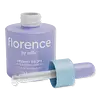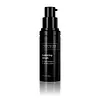What's inside
What's inside
 Key Ingredients
Key Ingredients

 Benefits
Benefits

 Ingredients Side-by-side
Ingredients Side-by-side

Water
Skin ConditioningGlycerin
HumectantButylene Glycol
HumectantLimnanthes Alba Seed Oil
Skin ConditioningHydrolyzed Hyaluronic Acid
HumectantAnthemis Nobilis Flower Water
MaskingCucumis Sativus Fruit Water
Skin ConditioningCitrullus Lanatus Fruit Extract
Skin ConditioningPyrus Malus Fruit Extract
Skin ConditioningRosa Gallica Flower Extract
AstringentAloe Barbadensis Leaf Juice
Skin ConditioningLens Esculenta Fruit Extract
Skin ConditioningCaffeine
Skin ConditioningPropanediol
SolventCarbomer
Emulsion StabilisingTriheptanoin
Skin ConditioningC13-15 Alkane
SolventSodium Phytate
Ethylhexylglycerin
Skin ConditioningHydroxyacetophenone
AntioxidantMethylglucamine
Pentylene Glycol
Skin ConditioningTocopheryl Acetate
AntioxidantXanthan Gum
EmulsifyingSodium Lactate
BufferingPotassium Sorbate
PreservativeSodium Benzoate
MaskingSodium PCA
HumectantCitric Acid
BufferingGlyceryl Acrylate/Acrylic Acid Copolymer
HumectantPhenoxyethanol
PreservativeWater, Glycerin, Butylene Glycol, Limnanthes Alba Seed Oil, Hydrolyzed Hyaluronic Acid, Anthemis Nobilis Flower Water, Cucumis Sativus Fruit Water, Citrullus Lanatus Fruit Extract, Pyrus Malus Fruit Extract, Rosa Gallica Flower Extract, Aloe Barbadensis Leaf Juice, Lens Esculenta Fruit Extract, Caffeine, Propanediol, Carbomer, Triheptanoin, C13-15 Alkane, Sodium Phytate, Ethylhexylglycerin, Hydroxyacetophenone, Methylglucamine, Pentylene Glycol, Tocopheryl Acetate, Xanthan Gum, Sodium Lactate, Potassium Sorbate, Sodium Benzoate, Sodium PCA, Citric Acid, Glyceryl Acrylate/Acrylic Acid Copolymer, Phenoxyethanol
Water
Skin ConditioningGlycerin
HumectantBiosaccharide Gum-1
HumectantSodium Hyaluronate
HumectantPalmitoyl Tripeptide-5
Skin ConditioningChondrus Crispus Extract
Skin ConditioningGlyceryl Polyacrylate
Honey
HumectantHydrolyzed Hazelnut Protein
Skin ConditioningPunica Granatum Extract
AstringentTocopheryl Acetate
AntioxidantMacrocystis Pyrifera Extract
Skin ConditioningCitrullus Lanatus Fruit Extract
Skin ConditioningLens Esculenta Fruit Extract
Skin ConditioningPyrus Malus Fruit Extract
Skin ConditioningButylene Glycol
HumectantSodium Lactate
BufferingSodium PCA
HumectantPolysorbate 20
EmulsifyingLeuconostoc/Radish Root Ferment Filtrate
AntimicrobialEthylhexylglycerin
Skin ConditioningSodium Polyacrylate
AbsorbentPhenoxyethanol
PreservativeCitric Acid
BufferingWater, Glycerin, Biosaccharide Gum-1, Sodium Hyaluronate, Palmitoyl Tripeptide-5, Chondrus Crispus Extract, Glyceryl Polyacrylate, Honey, Hydrolyzed Hazelnut Protein, Punica Granatum Extract, Tocopheryl Acetate, Macrocystis Pyrifera Extract, Citrullus Lanatus Fruit Extract, Lens Esculenta Fruit Extract, Pyrus Malus Fruit Extract, Butylene Glycol, Sodium Lactate, Sodium PCA, Polysorbate 20, Leuconostoc/Radish Root Ferment Filtrate, Ethylhexylglycerin, Sodium Polyacrylate, Phenoxyethanol, Citric Acid
Ingredients Explained
These ingredients are found in both products.
Ingredients higher up in an ingredient list are typically present in a larger amount.
Butylene Glycol (or BG) is used within cosmetic products for a few different reasons:
Overall, Butylene Glycol is a safe and well-rounded ingredient that works well with other ingredients.
Though this ingredient works well with most skin types, some people with sensitive skin may experience a reaction such as allergic rashes, closed comedones, or itchiness.
Learn more about Butylene GlycolCitric Acid is an alpha hydroxy acid (AHA) naturally found in citrus fruits like oranges, lemons, and limes.
Like other AHAs, citric acid can exfoliate skin by breaking down the bonds that hold dead skin cells together. This helps reveal smoother and brighter skin underneath.
However, this exfoliating effect only happens at high concentrations (20%) which can be hard to find in cosmetic products.
Due to this, citric acid is usually included in small amounts as a pH adjuster. This helps keep products slightly more acidic and compatible with skin's natural pH.
In skincare formulas, citric acid can:
While it can provide some skin benefits, research shows lactic acid and glycolic acid are generally more effective and less irritating exfoliants.
Most citric acid used in skincare today is made by fermenting sugars (usually from molasses). This synthetic version is identical to the natural citrus form but easier to stabilize and use in formulations.
Read more about some other popular AHA's here:
Learn more about Citric AcidCitrullus Lanatus Fruit Extract comes from the watermelon. Watermelon has antioxidant and anti-inflammatory properties.
Watermelons are rich in antioxidants such as Vitamin A, Vitamin C and lycopene. It also contains sugars and amino acids, such as arginine and glutathione.
Lycopene is a potent antioxidant. Besides helping to protect your skin against free-radical molecules, it also helps soothe the skin. Lycopene gives watermelon the distinct red color.
Learn more about Citrullus Lanatus Fruit ExtractEthylhexylglycerin (we can't pronounce this either) is commonly used as a preservative and skin softener. It is derived from glyceryl.
You might see Ethylhexylglycerin often paired with other preservatives such as phenoxyethanol. Ethylhexylglycerin has been found to increase the effectiveness of these other preservatives.
Glycerin is already naturally found in your skin. It helps moisturize and protect your skin.
A study from 2016 found glycerin to be more effective as a humectant than AHAs and hyaluronic acid.
As a humectant, it helps the skin stay hydrated by pulling moisture to your skin. The low molecular weight of glycerin allows it to pull moisture into the deeper layers of your skin.
Hydrated skin improves your skin barrier; Your skin barrier helps protect against irritants and bacteria.
Glycerin has also been found to have antimicrobial and antiviral properties. Due to these properties, glycerin is often used in wound and burn treatments.
In cosmetics, glycerin is usually derived from plants such as soybean or palm. However, it can also be sourced from animals, such as tallow or animal fat.
This ingredient is organic, colorless, odorless, and non-toxic.
Glycerin is the name for this ingredient in American English. British English uses Glycerol/Glycerine.
Learn more about GlycerinWe don't have a description for Lens Esculenta Fruit Extract yet.
Phenoxyethanol is a preservative that has germicide, antimicrobial, and aromatic properties. Studies show that phenoxyethanol can prevent microbial growth. By itself, it has a scent that is similar to that of a rose.
It's often used in formulations along with Caprylyl Glycol to preserve the shelf life of products.
Pyrus Malus Fruit Extract is extract from Apples. Apples are rich in Vitamin C, sugars, and antioxidants.
The sugar in Apples are humectants and help hydrate the skin. On top of that, apples also contain some acids, such as malic acid. These acids may have a mild exfoliating effect.
Last, the phytochemicals found in apples are strong antioxidants. These antioxidants help with anti-aging as they protect your skin cells against oxidative damage.
Learn more about Pyrus Malus Fruit ExtractSodium Lactate is the sodium salt of lactic acid, an AHA. It is a humectant and sometimes used to adjust the pH of a product.
This ingredient is part of our skin's NMF, or natural moisturizing factor. Our NMF is essential for the hydration of our top skin layers and plasticity of skin. NMF also influences our skin's natural acid mantle and pH, which protects our skin from harmful bacteria.
High percentages of Sodium Lactate can have an exfoliating effect.
Fun fact: Sodium Lactate is produced from fermented sugar.
Learn more about Sodium LactateSodium PCA is the sodium salt of pyroglutamic acid. It is naturally occurring in our skin's natural moisturizing factors where it works to maintain hydration.
The PCA stands for pyrrolidone carboxylic acid, a natural amino acid derivative.
This ingredient has skin conditioning, anti-inflammatory, and humectant properties. Humectants help hydrate your skin by drawing moisture from the air. This helps keep your skin moisturized.
Learn more about Sodium PCATocopheryl Acetate is AKA Vitamin E. It is an antioxidant and protects your skin from free radicals. Free radicals damage the skin by breaking down collagen.
One study found using Tocopheryl Acetate with Vitamin C decreased the number of sunburned cells.
Tocopheryl Acetate is commonly found in both skincare and dietary supplements.
Learn more about Tocopheryl AcetateWater. It's the most common cosmetic ingredient of all. You'll usually see it at the top of ingredient lists, meaning that it makes up the largest part of the product.
So why is it so popular? Water most often acts as a solvent - this means that it helps dissolve other ingredients into the formulation.
You'll also recognize water as that liquid we all need to stay alive. If you see this, drink a glass of water. Stay hydrated!
Learn more about Water